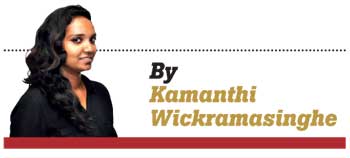Reply To:
Name - Reply Comment
Last Updated : 2024-04-25 04:37:00



 bullets fired at a person that could be collected at a scene of crime. Such evidence doesn’t vanish like the memories of an eye-witness nor can they bribed.
bullets fired at a person that could be collected at a scene of crime. Such evidence doesn’t vanish like the memories of an eye-witness nor can they bribed.S.D. Dharmasena from Los Angles Thursday, 22 October 2015 11:45 AM
Mr. Udayakumara Amarasinghe is well known researcher on Criminology . He has done lot of studies in this field after having met prisoners and higher officers In Prison Dept, Police and Drug and Narcotic Bureau.. This discussion by Kamanthi Wickramsinghe with Senior Lecturer is very important considering the highly increasing rate of present day crimes in Sri Lanka.

Add comment
Comments will be edited (grammar, spelling and slang) and authorized at the discretion of Daily Mirror online. The website also has the right not to publish selected comments.
Reply To:
Name - Reply Comment
US authorities are currently reviewing the manifest of every cargo aboard MV
On March 26, a couple arriving from Thailand was arrested with 88 live animal
According to villagers from Naula-Moragolla out of 105 families 80 can afford
Is the situation in Sri Lanka so grim that locals harbour hope that they coul